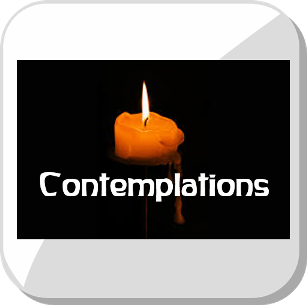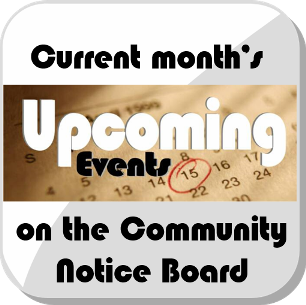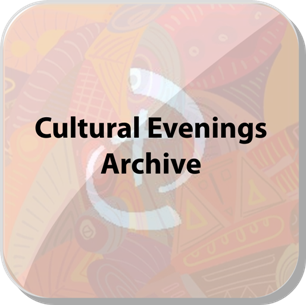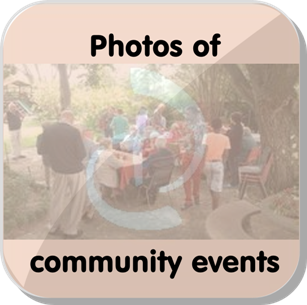Michaelmas Workshops - exploring the nature and structure of Koine Greek with Rev. Michaël Merle4/11/2023 Reported by John-Peter Gernaat Over the first three Sundays of Michaelmas Rev. Michaël Merle led three workshops exploring the nature and structure of Koine Greek – the language used to record and convey the Gospel: euangélion (εὐαγγέλιον): The new word that resounds from the realm of the angels: the good news, which translated into Latin gave us: evangelium.
The purpose of these workshops was to consider why the New Testament was written in Greek? How did this language, and what it captured of the concepts of life and development, contribute to our understanding of God? These questions as well as an exploration into some of the words found only in the New Testament or mainly in this text formed the basis of these workshops. We began by considering the influence of Greek on the English language. The major remaining contribution of Greek is in the words we use in the sciences. Here we begin to understand how root words (roots) are used as prefixes or suffixes to give a very specific meaning to words. An example would be the skin or the dermis. In embryonic development we speak of the ectoderm (the outer dermis), the mesoderm (the middle dermis), and the endoderm (the inner dermis). When considering our skin as earthly human beings we speak of the epidermis (the well-fitting layer of dead skin cells upon the dermis that protects the dermis beneath). Anabatic winds flow up mountains and katabatic winds flow down mountains. This is because ana means up and kata means down. We quickly saw how roots in Greek can be used to give words a very specific meaning. As a matter of interest, we looked at how the Greek alphabet developed from the Late Phoenician alphabet. We had studied the development of the alphabet during the St Johnstide workshops when Michaël ran workshops on the use of Ancient Hebrew in the Old Testament. (Click here to read the article.) It was interesting to see how the Romans adopted the Greek alphabet to give us our modern alphabet, and how many new letters we have that were adapted from the Greek or Latin as opposed to directly taken from them. When we consider the Gospel (and here we could say all the books of the New Testament) we are not reading a historical record. A 'social media' account of the day would have been written in Aramaic, the language of daily discourse. The purpose of the Gospel was to provide an understanding of what had occurred and what was still unfolding. In order to be precise, the Gospel was written in Koine Greek. Koine Greek was the language of philosophy (philo is love and sophia is wisdom, thus philosophy is a love of wisdom) and the writers of the Gospel wished to make it clear that the most profound writings of the time had been taken a step further, had been renewed through the events of which the Gospel speaks. Koine Greek converged ideas and concepts better than any of the other languages in common use at the time Koine Greek had a capacity for using roots and creating new words. This allowed the Gospel writers to create words that were new, to describe precisely what they wished to convey. Everyone understood the meaning even when a word was newly created. Because each root in Greek can be translated into several different words – words that are dependent on the context in which the root is used - and sometimes an entire sentence is needed to express the meaning; hence, translating the Greek Gospel is no easy task. Translators prefer to find the most appropriate word or phrase for the Greek rather than writing sentences, and so each translator opts for a certain preference and in so doing, although not betraying the Koine Greek, something of the original meaning may be lost. (Of the modern European languages, German is best suited to creating new words by conjoining words. The new word can be understood by the meaning of each conjoined word and also be understood in its own right as conveying a clear concept. This may be considered as one of the reasons that German was best suited to bringing us the concepts of Spiritual Science. It also means that the translation of concepts of Spiritual Science require unpacking in other languages.) A word that predominantly occurs only in the Gospel is the word anablēpo. The root ana means up and the root blēpo is to look or see. The Hebrews had a tradition of looking up in prayer. This is integral to the relationship the Hebrews had with Yahweh of the Elohim. The Greeks did not have this tradition of prayer. The Greeks placated their gods, but they did not communicate with their gods. Thus, the concept of looking up, or anablēpo was not one used in the Greek language. The word is used predominantly in the Gospel. In the Gospel it is used when Jesus raises his sight to the Father in prayer. But it is also used by Mark in the story of the healing of the man described in translation as being blind. The Koine Greek word is tuphlos/typhlos (τυφλός, ή, όν) which means to raise a smoke. In relation to a person, it signified that their sight was impaired, and this sight could be physical sight or spiritual sight. When Jesus asks the man: “What is it that you will I do for you?”; the man responds: “restore my anablēpo”. The man willed to be able to look up as one would in prayer. He asked to have his spiritual sight restored. In most translations the man asks for his sight because he was blind. Only in understanding the Koine Greek can we appreciate the nuanced way of understanding that this was not merely physical blindness and physical sight, but that the Gospel writer wishes us to understand a spiritual plea in the man’s request. One of the interesting words that we considered is in the Lord’s Prayer, in the fifth petition: Give us this day …. The word that is used in Koine Greek is epiousious / epiousion. The first root (epi) tells us that this is appropriate, well fitting, fittingly, fittingly placed upon. The second root (ousia) means beingness. A good translation of this petition is: Give us this day the bread fitting for our appropriate. substantial development. This petition in the Aramaic of the day was Hawlan lachma d’sunqanan yuamana. This translates as produce in life and soul - bread or knowledge - needed or in illumined measure (as in a bird’s nest) - today. This could be translated as Give me the capacity today, to produce within my life and soul the nourishing understanding we need to illumine our circle of becoming. In his translation into Latin St Jerome used the word super-substantial (or super-essential). The King James translators followed Tertulian’s view of looking to the Old Testament for guidance and deciding to use the experience of the Israelites in the desert receiving manna on a daily basis, enough only for each day, as to best understand this petition and hence we have Give us this day our daily bread, as if we can only receive what we need for today. Epiousious can be considered the appropriately fitting substance that we receive today in order to manage tomorrow (and all that follows). Finally, we undertook the translation of a part of Paul’s letter to the Ephesians 6: 10-13. Verse 12 reveals that our fight is not against our life on earth (our incarnation into earthly life) but rather against specific hierarchies of angelic beings that are very clearly defined. They are the “first rulers” or the spirit beings from the beginning of time. We know them as the fallen archai or the azuras; the spirit beings powerful in spiritual and earthly moral influence; cosmic powers of darkness; and spirit beings behind the pain we suffer in earth existence. These workshops provided insight into the language of Koine Greek and how it was used to express the good word from the angels (the evangelious). This report does not detail the full workshops or all the scripture verses that were translated. It provides only a small window into some of the fascinating work that was undertaken in the course of the three Sundays.
0 Comments
|
Article Archives
December 2023
2022 - January to December
2021 - January to December 2020 - January to December 2019 - January to December 2018 - January to December 2017 - January to December 2016 - January to December 2015 - January to December 2014 - November & December 2013 - July to December 2013 - January to June 2012 - April to December Send us your photos of community events.
Articles (prefaced by month number)
All
|




 RSS Feed
RSS Feed